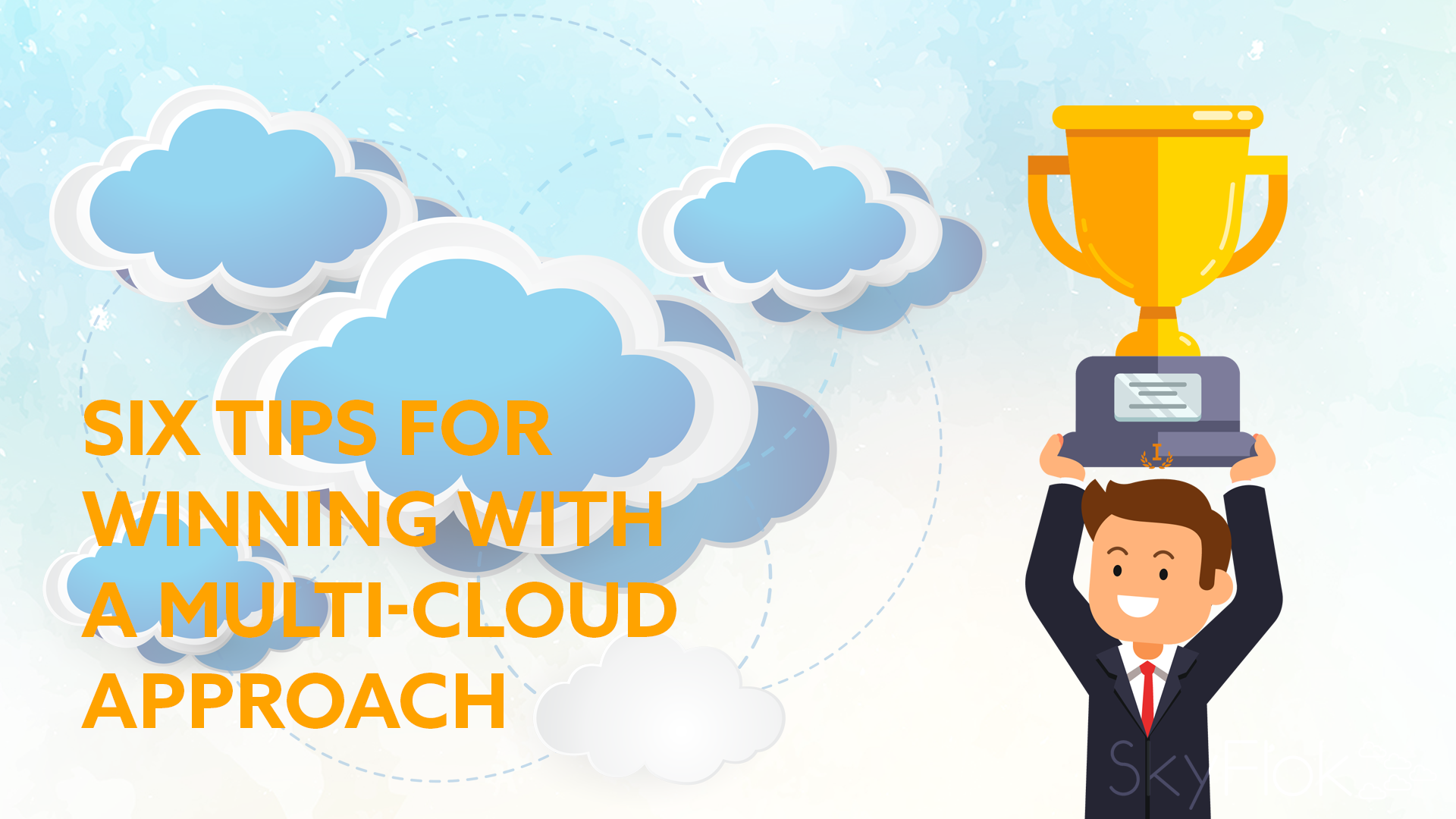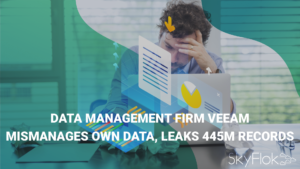A multi-cloud approach provides options for building Software-as-a-Service (SaaS) that generates the best possible experience for customers. These benefits have resulted in more and more companies choosing to support a multi-cloud strategy.
At SkyFlok, we offer our customers an easy-to-use web application and a desktop application to store and share data privately across multiple data storage providers across the globe. Skyflok follows a multi-cloud by design approach and a single bill at the end of the month: robust, secure, simple.
Here are some of the key benefits of SkyFlok:
- Confidentiality by design: no individual Cloud provider can look into the client’s data
- Flexibility: users can mix and match different public providers and, in the near future, on-premise storage
- Availability: Data is available even if some providers are temporarily offline
- Capacity: Use a set of different Cloud storages as a single large cloud
- Bandwidth: Transport data simultaneously on multiple channels
- GDPR compliance: clients can choose from our GDPR compliant locations
Subscribe to SkyFlok.
The multi-cloud approach isn’t always straightforward. A recent VMware survey of 1,355 IT professionals found that 57 percent of respondents cited technical challenges and the demand for new skills and staff as unexpected challenges associated with a multi-cloud approach. In my estimation, the effort is more than worth it when approached the right way.
Here are six tips for succeeding with a multi-cloud approach.
Adopt a Nimble Mindset
Give yourself the flexibility to take advantage of new services that emerge from cloud providers around the globe. Approximately 55 percent of cloud decisions are made on a case-by-case, per-application basis. I would argue that number should be much higher. By regularly updating a best-in-class stack, your product team will best serve your business and your customers.
Steer Clear of Long-Term Contracts
Long-term contracts can bring price discounts, but they come with their costs. The marketplace moves quickly, and businesses should avoid multi-year agreements with cloud infrastructure vendors when possible.
Problems can arise quickly: A machine learning vendor’s pricing goes up dramatically; a CRM product no longer fits your needs; a vendor’s product roadmap may start to look muddy, or their technology might not comply with the latest in security best practices or governmental regulations. For these reasons, a multi-cloud approach requires that you can pivot in a month’s time rather than a year.
Don’t Expect Results Overnight
When adding a new cloud technology to your stack or switching out one system for another, anticipate a learning curve that lasts weeks or even months. Staffers have to educate themselves on how the new system works, run tests, learn from these experiments and iron out the kinks of the integration. Your patience will pay off because a multi-cloud strategy allows for greater flexibility when incidents like service outages occur.
Prioritize Customers’ Needs (Especially Security)
I’ll use my own company as an example of why selecting the right cloud partners is imperative in serving your customers. We chose IBM Watson for real-time, speech-to-text transcription because security elements are crucial to our clients — particularly when it comes to customer data. At Invoca, phone call analysis is central to the service we provide. The average customer phone call lasts almost five minutes, and for my team, that means collecting reams of data compared to several clicks on an e-commerce site. For that reason, we appreciated Watson’s security features, particularly its ability to receive and then send back audio files in small data packets rather than chunks or full conversations.
Develop a Governance Mechanism
Your company should incorporate a governance mechanism to its multi-cloud strategy, safeguarding customer and corporate information and protecting shareholders’ interests. In other words, you need a well-conceived system for overseeing the entire operation, including security norms, user types, access rights, data governance, workload types, data migration processes, and general norms for each type of cloud.
Use Multi-Cloud to Attract Talent
You need great people—folks who want to be at the forefront of technology—to be successful with a multi-cloud approach. The inverse is also true—a nimble, multi-cloud company is more attractive to talent, so play this up in your recruiting. Offering the chance to work on a variety of clouds has significantly helped my company recruit to Santa Barbara, a mid-sized city that, while paradisiacal, doesn’t offer the metropolitan lifestyle of San Francisco, Los Angeles or New York City. Luckily, product developers are more concerned with deep neural nets than dance clubs, and the multi-cloud approach addresses their desire to be continually learning the hottest new stuff. Keep that in mind as you work with HR for job postings and speaking with candidates.







